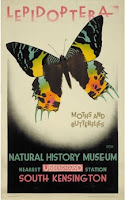In 2011, Hamden Gurney Church of
England Primary School was named State
Primary School of the Year. (Friends
and family will share my mild pride that Bearsden
Academy was Best
Scottish State Secondary
School the same year.) Hampden Gurney’s fortunes
have been transformed over the last fifteen years by Evelyn Chua, a head teacher
with vision. In 1997 when she took over it was struggling to attract pupils and
teachers, and occupying a dilapidated set of buildings. Chua has created a
library of 11,000 books for her pupils where once there was only a bookcase,
housed in a remarkable new school building opened in 2002. If ever there was an
argument for the value of libraries, it is that in the five years leading up to
the 2011 award, every single one of Hampden Gurney’s children has reached the
required standard in national tests.
Hampden Gurney School
new building designed by the RDP
architectural practice
and shortlisted for the 2002 Stirling Prize
The school was established in
1863 in memory of the Reverend John Hampden Gurney, a first cousin of my great
great grandmother. He died the year before of typhoid, and had made enough of a
mark in life not only to have a school named after him but to receive a
character sketch in a religious magazine sixteen years after his death. Sunday At Home in its 26th April 1879 edition described
him as “a blunt, impassioned preacher [who] offended some of wealth and power.”
I like him already.
Hampden, as he was known, trained
and practiced in the legal profession but withdrew from it to become a
clergyman. He was the curate of St Mary’s Church at Lutterworth in
Leicestershire for fifteen years before returning to his birthplace, London,
to take up the post of prebendary at St Paul’s
Cathedral. He was a committed supporter of the Society for Promoting Christian
Knowledge, an evangelical agency of the Church of England in the mould of the more
nonconformist Religious Tract Society. During his time at St
Paul’s he founded the Scripture Reader’s Society.
He was appointed rector of St
Mary’s Marylebone, and his experience of inner city life during his tenure
there prompted him to write pamphlets in support of the Poor Law and of church
reform. Although he was himself a member of the establishment church, his
family’s long history of non-conformity as Quakers and Baptists over many generations
before him must have nurtured his tendency to iconoclasm. Hampden also published
three volumes of sermons, two collections of hymns (known as the Lutterworth
and Marylebone Collections) which included some of his own compositions, and
several historical biographies.
Hampden Gurney School’s original building of 1863
(photographed c1982)
(photographed c1982)
The school which carries his name
moved to its present location in Nutford Place
off the Edgware Road in
1967 when the then new school building, erected to replace one destroyed during the Blitz, was officially opened by the future poet laureate John Betjeman. The school originally stood on nearby Hampden
Gurney Street, a road presumably laid out in 1863 when
they built the school.
There were two classrooms on the ground floor and three upstairs. That first building is demolished now, but after the school vacated it, it had an interesting series of occupants from the creative industries. It became a film production centre and a photographic studio, and in 1975 the upper floor was rented by an emerging young composer and former member of Greek pop group Aphrodite’s Child – Vangelis.
There were two classrooms on the ground floor and three upstairs. That first building is demolished now, but after the school vacated it, it had an interesting series of occupants from the creative industries. It became a film production centre and a photographic studio, and in 1975 the upper floor was rented by an emerging young composer and former member of Greek pop group Aphrodite’s Child – Vangelis.
China and the Blade Runner soundtrack
two of many Vangelis albums recorded at his Nemo Studios in Hampden Gurney Street
As Nemo Studios it was Vangelis’s
recording base for the next 13 years and the birthplace of all his early
triumphs – his solo albums including Albedo
0.39 and Beaubourg (and my
favourite China);
his three albums in collaboration with Jon Anderson; and the film soundtracks for
which he is perhaps best known. Chariots
of Fire, Blade Runner and many
other scores were all written and recorded in the upstairs classrooms of Hampden
Gurney Anglican School.
Before and after Hampden Gurney’s death, his
own family was dogged by tragedy which you can read about elsewhere in this
blog. His wife Maria Grey died in childbirth in 1857. Three of his daughters drowned in a boating accident on the River Nile.
And his son Edmund became embroiled in an exploration of the possibility of life after death which, one feels, would have appalled Edmund’s clerical father.

























